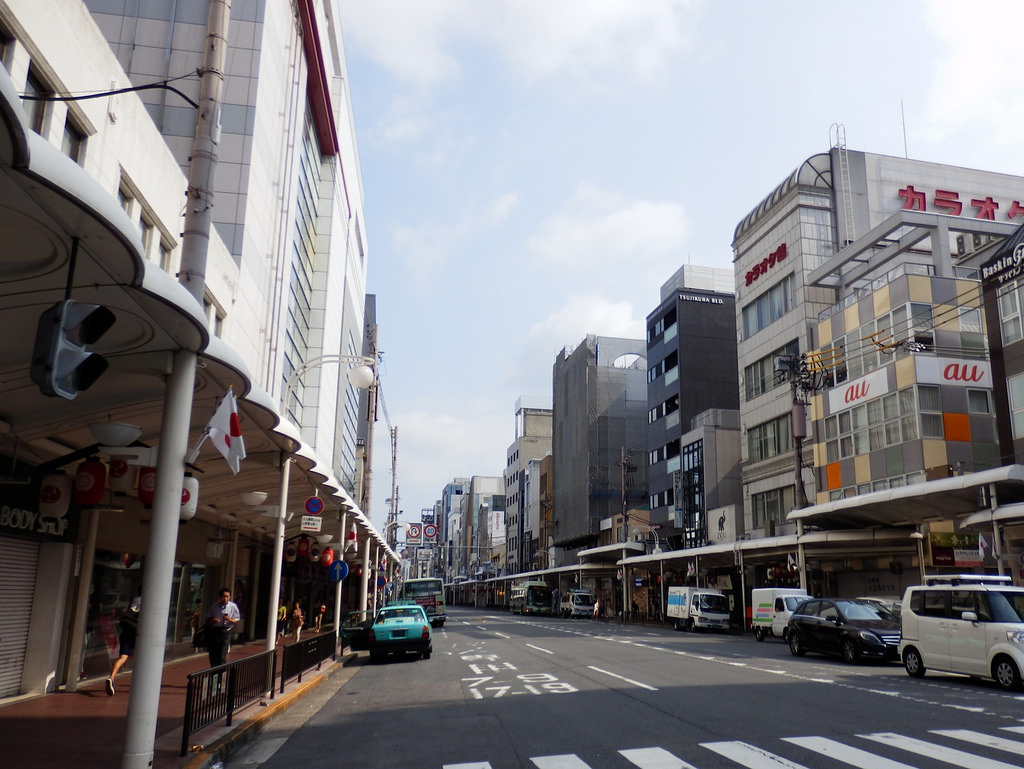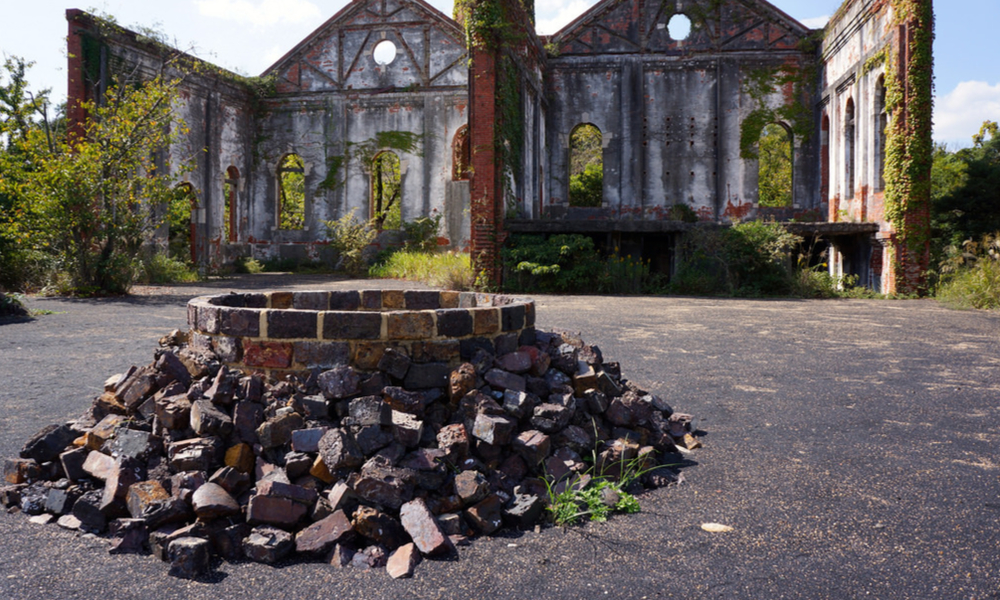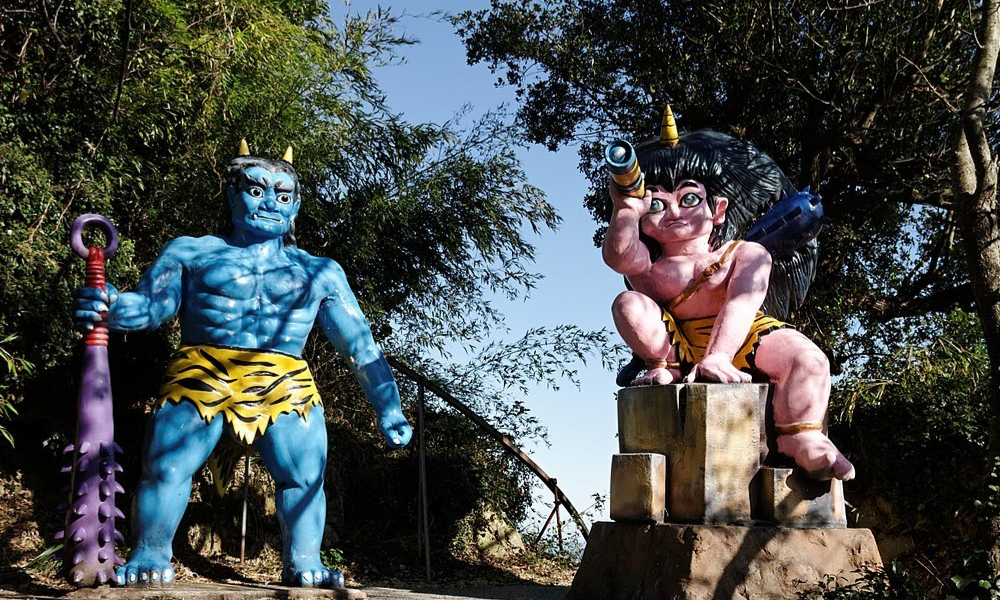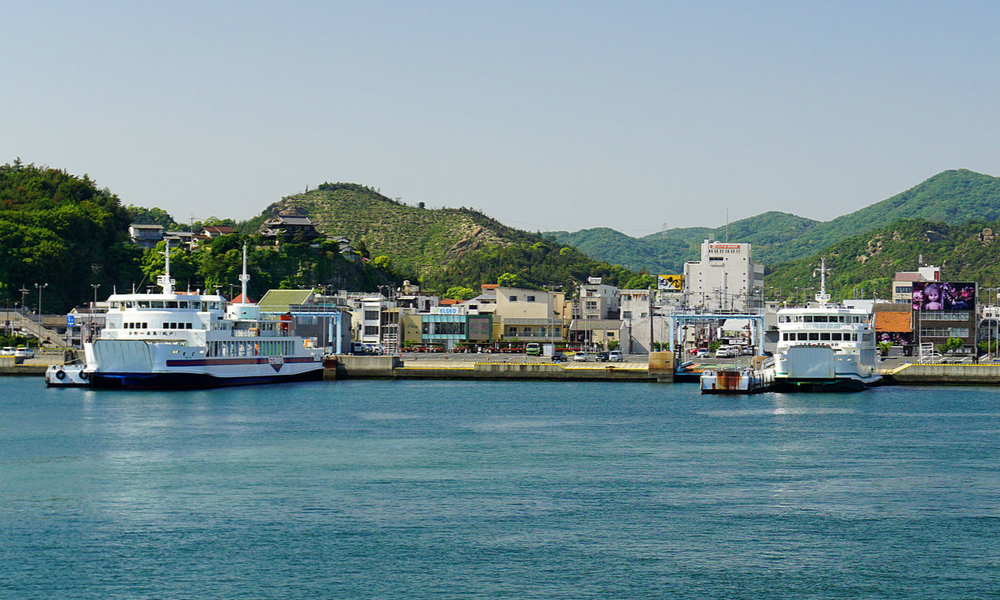
Cycling along the Kyoto's Kamogawa river
At first, we will cross the city of Kyoto through its oldest temple, parks and gardens, then follow the river upstream towards Shimogamo-jinja.
In downtown Kyoto, you will see the Shijo Kawaramachi district and Gion district which is filled with atmosphere.In addition, we will be able to admire the thousand statues of Senju Kannon (a thousand-armed Buddhist statue) that are lined up in the main hall of Sanjusangendo, and the oldest door (sanmon) and the huge main hall of the Tofuku-ji temple (partially burnt out).
You can return your bike near Fushimi Inari, then walk around freely.
* The guide will explain the way back from Fushimi-Inari.
To Kyoto Station by JR Nara line: Inari station - Kyoto station: 5min / 140yen
to the shopping area and Gion by Keihan line: "Fushimiinari station - Gion Shijo station: 10min / 210yen
★You can find this tour also on TripAdvisor and Viator!
Click here to discover our excursions from Kyoto.
We are Japan specialist travel agency, click here to contact our experts for more information about your next trip.
Overview
At first, we will cross the city of Kyoto through its oldest temple, parks and gardens, then follow the river upstream towards Shimogamo-jinja.
In downtown Kyoto, you will see the Shijo Kawaramachi district and Gion district which is filled with atmosphere.In addition, we will be able to admire the thousand statues of Senju Kannon (a thousand-armed Buddhist statue) that are lined up in the main hall of Sanjusangendo, and the oldest door (sanmon) and the huge main hall of the Tofuku-ji temple (partially burnt out).
You can return your bike near Fushimi Inari, then walk around freely.
* The guide will explain the way back from Fushimi-Inari.
To Kyoto Station by JR Nara line: Inari station - Kyoto station: 5min / 140yen
to the shopping area and Gion by Keihan line: "Fushimiinari station - Gion Shijo station: 10min / 210yen
★You can find this tour also on TripAdvisor and Viator!
Click here to discover our excursions from Kyoto.
We are Japan specialist travel agency, click here to contact our experts for more information about your next trip.
Itinerary ↓↓The tour will take you to ↓↓
Kyoto station ー Kyotogyoen - Shimokamojinja(Admission)- Downtown area[Teramachi, Kiya cho, Ponto cho, Gion area(Free time & Lunch)- Toyokunijinja - Sanjyusangendo(Admission)- Toufuku-ji(Admission) - Fushimi Inari (End of the tour, Free time)
★Meeting place:Kyoto station(It can be arranged to meet up at a hotel you stay and deliver a bike to the hotel.)
★Meeting time:9:00
★Duration:approx. 7 hours
★Highlight of the tour (recommended spots):
Shimogamo jinja (the world heritage)
Ride on about 20 minutes inside Kyotogosho then arrive the Shimogamo jinja.

The history of the shrine can go back to B.C. 90 as a legend tells that ritual events has taken place before the introduction of Buddhism into Japan.
It is the one of the few prestigious temples which allow to practice Shikinen Sengu, the system of reconstruction, all shrines in the Shimogamo complex are meant to be rebuilt every 21 years. However, the building is no longer able to be destroyed once registered in the world heritage, but able to be renovated partially every 21 years. The present buildings was renovated in 2015; for such occasions, we can see it in good condition.
The temple surrounded by huge primordial woods where is believed longmai running (feng shui) and it illuminates the spot as the power spot (places with full of spiritual energy).
Also the temple is known as the gods of the beauty that calls for female visitors. The source comes from Tamayorihime-no-mikoto, a woman of great beauty, is enshrined in the main sanctuary of the shrine.
You can recharge by visiting the temple, the leading spiritual temple with full of spiritual energy.
Downtown area -Ponto cho, Kiya cho, Kawara cho
We drop off our bikes then stroll the downtown area, Pnto cho and Gion, and have the lunch.



The first street parallel to the Kamogawa is called Ponto cho Street, which like Gion, is made up of many Ochaya (teahouse where a guest call Geisha for entertainment).
The street is so narrow that vehicles are not get in. The street survived the fire occurred in the 19th century, and retains its atmosphere of yesteryear where many lanterns lit at night to illuminate shops across the street. It is a popular place for “Instabae” (Instabae means spot is good for taking picture specially for Instagram to make people envious).
The second street of Kamogawa is Kiyamachi-dori. It is a street along the Takasegawa canal where many cherry trees line. The area is popular dating spot since there are many restaurants of various nationalities of your choice along the street.
The third is Kawaramachi-dori, the liveliest street in Kyoto, with department stores, a cinema complex, and a shopping center, it can be called as a financial center of Kyoto.
Besides these streets, many souvenir shops along arcades like Teramachi dori and Shinkyogoku streets attract many foreign tourists. The east bank area is therefore nocturnal and it is easy to find taxis even at midnight that encourages you to go out at the night in Kyoto.
Gion area

Nowadays, the area from Yasaka Shrine to the Kamogawa river is called Gion; however, there is no precise definition.
Above all, the area of the northern part of Shirakawa, where the Biwa Lake canal sector and the Kamogawa river crossed is classified as the Preservation District for Groups of Historic Buildings. There are many Ochaya established in the Edo period, literally teahouse but actually the place where one dines in the presence of Maiko and Geiko, in the district.


The streets with the slatted doors and the late bamboo blinds give the neighborhood atmosphere a serene elegance.
If you see maikos and geikos during the day, they may be tourists dressed the same way; but, if it's evening, you'll have the chance to see the real maikos and geikos.


Sanjusangendo

In front of the main hall, a famous archery competition “Toshiya” takes place every year in January to celebrate new adult (in Japan, 20-year-old who has their coming-of-age ceremony within that year). The competitors must have the first dan level of Japanese art of archery as they launch targets placed at the same distance as the length of the hall.
Tofuku-ji


The main building of the temple (Hondo) and its annex (Kaizando) are separated by the valley and connected by the Tsutenkyo bridge whose pillars are hidden by the trees, which gives it the impression that it floats in the air. In addition, you can admire a painted dragon on the ceiling of the big main building, and on each side of the temple, in the Hojo have been arranged different gardens of styles Karesansui (dry gardens composed mainly of stones). You will also see one of Japan's oldest Zen temple (Sanmon) gates.


Fushimiinari (Free time)
Spend your time freely at the shrine, the most popular sactuary for foreign visitors.

These torii are offerings by individuals, companies or families to grant their wishes and such a custom can date back to the Edo period, the number of torii continue to grow until now.
It is possible to access the sanctuary also at night, the site is lighten up all night long which relieves you from worrying closing hours. You can also enjoy a short two-hour hike of about four kilometers, called "Oyama Meguri (a tour of Mount Inari)" for the person who is more athletic.


After returning the bike near Fushimi-inari shrine, the guide will take you to the entrance of Fushimi-inari, then the tour ends. Take your time to the full at the shrine which is the most apreciated by foreign tourists.
Detailed informatiion regarding the way back:
The guide will explain about the way back from Fushimi-Inari.
*For the Kyoto station with JR train: "Inari" station - "Kyoto" station :5 min/ 140yen.
For the commercial district and Gion with Keihan train: "Fushimi-Inari" station - "Gion Shinjo" station: 10 min/ 210yen
Click here to discover our excursions from Kyoto.
Where to Go





Itinerary
Itinerary ↓↓The tour will take you to ↓↓
Kyoto station ー Kyotogyoen - Shimokamojinja(Admission)- Downtown area[Teramachi, Kiya cho, Ponto cho, Gion area(Free time & Lunch)- Toyokunijinja - Sanjyusangendo(Admission)- Toufuku-ji(Admission) - Fushimi Inari (End of the tour, Free time)
★Meeting place:Kyoto station(It can be arranged to meet up at a hotel you stay and deliver a bike to the hotel.)
★Meeting time:9:00
★Duration:approx. 7 hours
★Highlight of the tour (recommended spots):
Shimogamo jinja (the world heritage)
Ride on about 20 minutes inside Kyotogosho then arrive the Shimogamo jinja.

The history of the shrine can go back to B.C. 90 as a legend tells that ritual events has taken place before the introduction of Buddhism into Japan.
It is the one of the few prestigious temples which allow to practice Shikinen Sengu, the system of reconstruction, all shrines in the Shimogamo complex are meant to be rebuilt every 21 years. However, the building is no longer able to be destroyed once registered in the world heritage, but able to be renovated partially every 21 years. The present buildings was renovated in 2015; for such occasions, we can see it in good condition.
The temple surrounded by huge primordial woods where is believed longmai running (feng shui) and it illuminates the spot as the power spot (places with full of spiritual energy).
Also the temple is known as the gods of the beauty that calls for female visitors. The source comes from Tamayorihime-no-mikoto, a woman of great beauty, is enshrined in the main sanctuary of the shrine.
You can recharge by visiting the temple, the leading spiritual temple with full of spiritual energy.
Downtown area -Ponto cho, Kiya cho, Kawara cho
We drop off our bikes then stroll the downtown area, Pnto cho and Gion, and have the lunch.



The first street parallel to the Kamogawa is called Ponto cho Street, which like Gion, is made up of many Ochaya (teahouse where a guest call Geisha for entertainment).
The street is so narrow that vehicles are not get in. The street survived the fire occurred in the 19th century, and retains its atmosphere of yesteryear where many lanterns lit at night to illuminate shops across the street. It is a popular place for “Instabae” (Instabae means spot is good for taking picture specially for Instagram to make people envious).
The second street of Kamogawa is Kiyamachi-dori. It is a street along the Takasegawa canal where many cherry trees line. The area is popular dating spot since there are many restaurants of various nationalities of your choice along the street.
The third is Kawaramachi-dori, the liveliest street in Kyoto, with department stores, a cinema complex, and a shopping center, it can be called as a financial center of Kyoto.
Besides these streets, many souvenir shops along arcades like Teramachi dori and Shinkyogoku streets attract many foreign tourists. The east bank area is therefore nocturnal and it is easy to find taxis even at midnight that encourages you to go out at the night in Kyoto.
Gion area

Nowadays, the area from Yasaka Shrine to the Kamogawa river is called Gion; however, there is no precise definition.
Above all, the area of the northern part of Shirakawa, where the Biwa Lake canal sector and the Kamogawa river crossed is classified as the Preservation District for Groups of Historic Buildings. There are many Ochaya established in the Edo period, literally teahouse but actually the place where one dines in the presence of Maiko and Geiko, in the district.


The streets with the slatted doors and the late bamboo blinds give the neighborhood atmosphere a serene elegance.
If you see maikos and geikos during the day, they may be tourists dressed the same way; but, if it's evening, you'll have the chance to see the real maikos and geikos.


Sanjusangendo

In front of the main hall, a famous archery competition “Toshiya” takes place every year in January to celebrate new adult (in Japan, 20-year-old who has their coming-of-age ceremony within that year). The competitors must have the first dan level of Japanese art of archery as they launch targets placed at the same distance as the length of the hall.
Tofuku-ji


The main building of the temple (Hondo) and its annex (Kaizando) are separated by the valley and connected by the Tsutenkyo bridge whose pillars are hidden by the trees, which gives it the impression that it floats in the air. In addition, you can admire a painted dragon on the ceiling of the big main building, and on each side of the temple, in the Hojo have been arranged different gardens of styles Karesansui (dry gardens composed mainly of stones). You will also see one of Japan's oldest Zen temple (Sanmon) gates.


Fushimiinari (Free time)
Spend your time freely at the shrine, the most popular sactuary for foreign visitors.

These torii are offerings by individuals, companies or families to grant their wishes and such a custom can date back to the Edo period, the number of torii continue to grow until now.
It is possible to access the sanctuary also at night, the site is lighten up all night long which relieves you from worrying closing hours. You can also enjoy a short two-hour hike of about four kilometers, called "Oyama Meguri (a tour of Mount Inari)" for the person who is more athletic.


After returning the bike near Fushimi-inari shrine, the guide will take you to the entrance of Fushimi-inari, then the tour ends. Take your time to the full at the shrine which is the most apreciated by foreign tourists.
Detailed informatiion regarding the way back:
The guide will explain about the way back from Fushimi-Inari.
*For the Kyoto station with JR train: "Inari" station - "Kyoto" station :5 min/ 140yen.
For the commercial district and Gion with Keihan train: "Fushimi-Inari" station - "Gion Shinjo" station: 10 min/ 210yen
Click here to discover our excursions from Kyoto.
| Important to know |
|
| Additional informations |
|
| Included |
|
| Not included |
|


 Seto Inland Sea
Seto Inland Sea East area
East area Naoshima
Naoshima Shodoshima
Shodoshima Teshima
Teshima Inujima
Inujima Megijima
Megijima Ogijima
Ogijima Honjima
Honjima Awashima
Awashima Takamishima
Takamishima Shishijima
Shishijima Ushimado
Ushimado Manabeshima
Manabeshima Takamatsu
Takamatsu Ieshima
Ieshima Kobe
Kobe Uno
Uno West area
West area Miyajima
Miyajima Hiroshima
Hiroshima Around Shimanami Kaido
Around Shimanami Kaido Onomichi
Onomichi Okunojima
Okunojima Omishima
Omishima Osakishimojima
Osakishimojima Ikuchijima
Ikuchijima Bareboat Charter
Bareboat Charter Crewed Charter
Crewed Charter Sailing Boat
Sailing Boat Cabin charter
Cabin charter  Yacht charter
Yacht charter Motor Boat
Motor Boat Our Fleet
Our Fleet Suggested Cruises
Suggested Cruises ¥399,000〜
¥399,000〜 ¥399,000〜
¥399,000〜